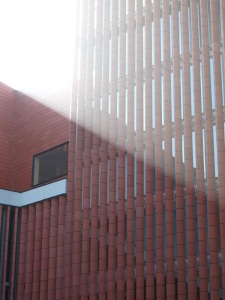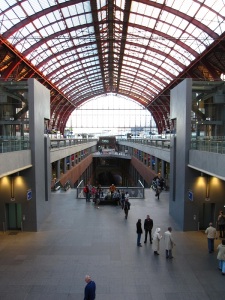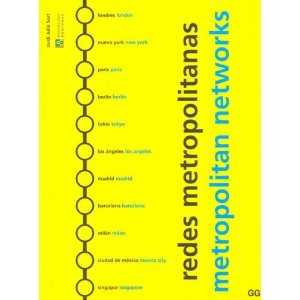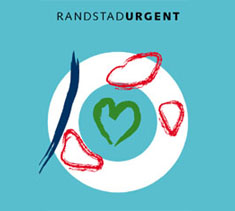I went to see Brugge (or Bruges in English) in Belgium. It is an old city in Flanders, near the North Sea coast, and is a UNESCO World Heritage site. It is full of ancient buildings, ranging from medieval to Neo-Classical buildings. The reason why I was interested was not primarily because of its ancient heritage but above all because of the tension it creates between the old and the new. Being a world heritage site has its advantages because it protects the streets and the buildings and it attracts enormous amounts of tourists. It also has a considerable disadvantage because, essentially, it freezes the development of the city to a great extent. In other words: it has become very difficult to develop the town further. Or is it?
A bit of history here then. Arguably the most important person where it concerns architecture and urban planning is Louis Delacenserie who, when in charge of the Brugge office for architecture, rebuild and restored many of the city’s old buildings. This large-scale restoration boosted Brugge’s image and the city discovered that it could use this image to attract tourists interested in cultural things. Now, it must be understood that Delanceserie did not always remain faithful to the styles and elements of the buildings he restored. In fact, on many occasions he would redesign parts of the building in order to make it look more Gothic or Neo-Classical than it ever was. One can see him rewriting a bit of the architectural history. I’m not saying this is good or bad (in fact, he was sometimes forced to change the design due to poor constructional choices in the past) but I want to point out that the genuine character of the city that was awarded a world heritage status is, in fact, partly fabricated on a much later point in time than the original construction.
In 1979 the municipality got its own department for preservation and reservation. It started to hand out subsidies to house owners to restore their buildings, provided they would restore them to the original looks. The subsidy was successful in helping to rebuild the city even further and many facades where returned to their original looks whilst the constructions were upgraded to more modern standards.

This building on the site where the Genthof and Spiegelrei cross was the first building to be restored using the subsidy from the municipality. Picture by me.
So, looking back at the history of architecture and urban planning, everything seems geared towards preserving the past and, occasionally, improving it. But that is not the full story. The question is: is there still room to do something new, something modern, in this old city? A number of Belgian architects responded to this question in an exhibition in the Gruuthuse. They agreed that rules for building something new are very strict but not unreasonable. One architect remarked with some irony that, when looking at the average Belgian suburb, it seems that more freedom of rules does not necessarily lead to better buildings. All agreed that it would be necessary for Brugge to keep on developing. Cities are always layers of time and it wouldn’t make sense to pretend that the city stopped developing in 1850 or so. The Concertgebouw, built in 2002 to commemorate the year that Brugge acted as the cultural capital of Europe, is a bold (post-)modern statement, trying to unite the traditional and modern in one building.

Detail of the modern Concertgebouw in Brugge. Picture by me.
More modern buildings, mostly houses, can be found around the town. In all cases the architects had to deal with the strict regulations. They found ways to unite both extremes of the spectrum. In that way, they can be seen as bridging gaps in the urban history of Brugge. They help keeping this city going and developing and adding layers of built history to it. I believe this is necessary and healthy for any place. Full stagnation doesn’t attract the young and adventurous. Whether the architects did a good job style-wise is up to the reader. Below are some examples.

Picture by me.

Picture by me

Picture by me

Picture by me
Fittingly, for one of the most interesting examples of old-meeting-new, we need to return to Delanceserie. His masterwork is perhaps the Antwerpen Centraal Station. It is a major station in the Neo-Renaissance style. A few years ago it was thoroughly rebuilt, receiving full restoration and four (!) extra floors of platforms and tracks on top of each other. The lowest floor gives access to a train tunnel leading to the north of the city, to enable through-services (up until that time, the station used to be a terminus). This new construction was carried out in bare concrete, steel and bricks and married happily with Delanceserie’s luxurious building on top of it.

Dome Antwerpen Centraal. Picture by Puangjita.

Stairs Antwerpen Centraal. Picture by Puangjita.

Antwerpen Centraal. Picture by me.
Read Full Post »















